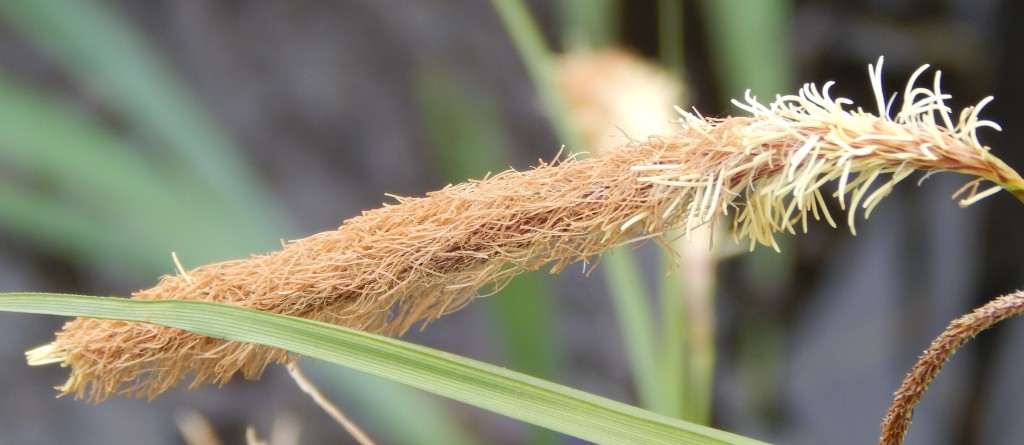
[349] Typha latifolia, Bulrushes
Introduction
Typha latifolia, the (Common) Bulrush, is a tall grass-like plant found at the edges of ponds and lakes. It has other common names including Broadleaf Cattail, Common Cattail and Great Reedmace.
In the United Kingdom and Ireland, Bulrush refers to all members of the genus Typha, where they are also called Reed Mace (or Reedmace.) The name Cattail is also use, although I suspect this may American usage.
The word Bulrush is also used for several types of wetland grass-like plants, particularly the genera Cyperus and in America Scirpus (including six genera recently moved out of Scirpus) in the sedge family, Cyperaceae.
Taxonomy
Kingdom – Plants
Division – Vascular Plants
Class – Angiosperms (Flowering Plants)
Order – Poales (Grasses, Rushes and Sedges)
Family – Typhaceae (Typha and possibly one other genus)
Genus – Typha
Scientific Name – Typha latifolia
Some authorities put Typhaceae in a separate order Typhales rather than including it in the order Poales.
Names
The word rush (now generally applied to the family Juncaceae) for marshy grass-like plants has Middle English roots, possibly from earlier words meaning weave or broom. The prefix bul- probably means large.
Cattail does come from cat-tail and it has a rare pronunciation, as if written cat-tail.
Reedmace, also written Reed Mace or Reed-mace comes obviously from reed and mace. The Middle English reed for aquatic grass is of unknown origin; mace in the sense of a baton or club probably comes from the Latin mateola, hoe.
Typha is Latinized from Ancient Greek tuphe or typhe, used for a smaller species of bulrush/ cattail. Latifolia means broad-leaved.
[Note that words like grass standing for masses of small plants are generally treated as uncountable, larger species like rushes and bulrushes are countable. So, we might see some bulrushes but a field of grass.]
Description
Typha species are typical of the grass family in forming very long, straight vertical grass-like leaves. They grow easily to a height of two to three metres. As the epithet latifolia suggests, the leaves are flat and fairly broad.
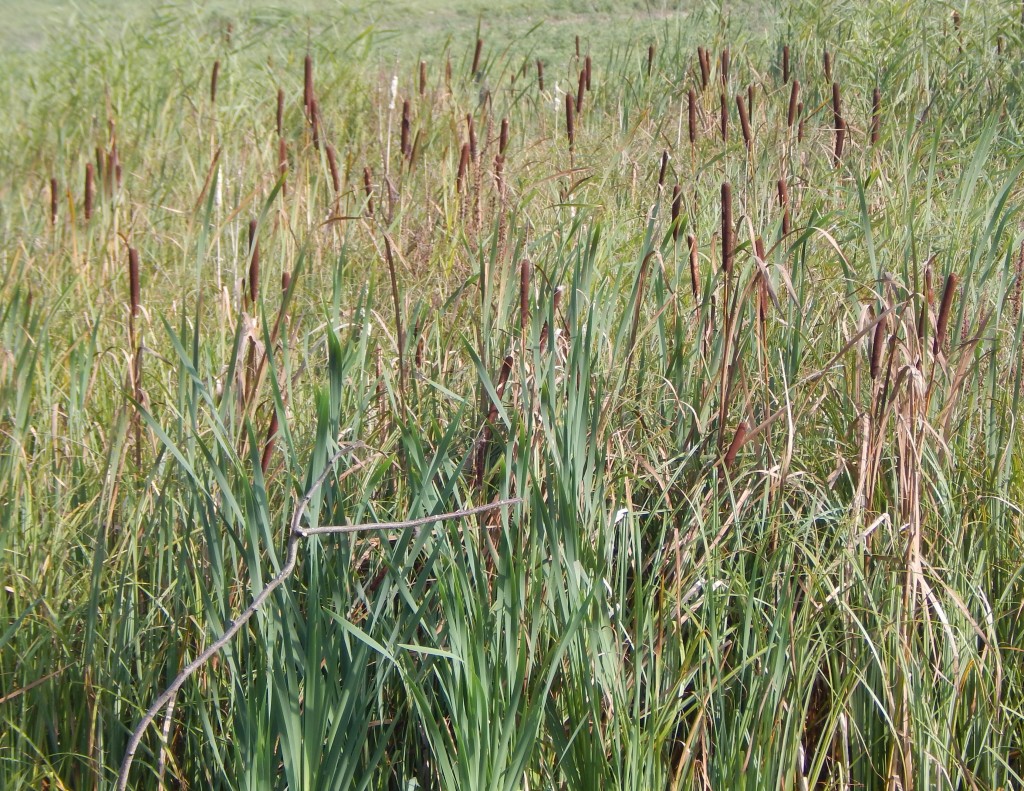
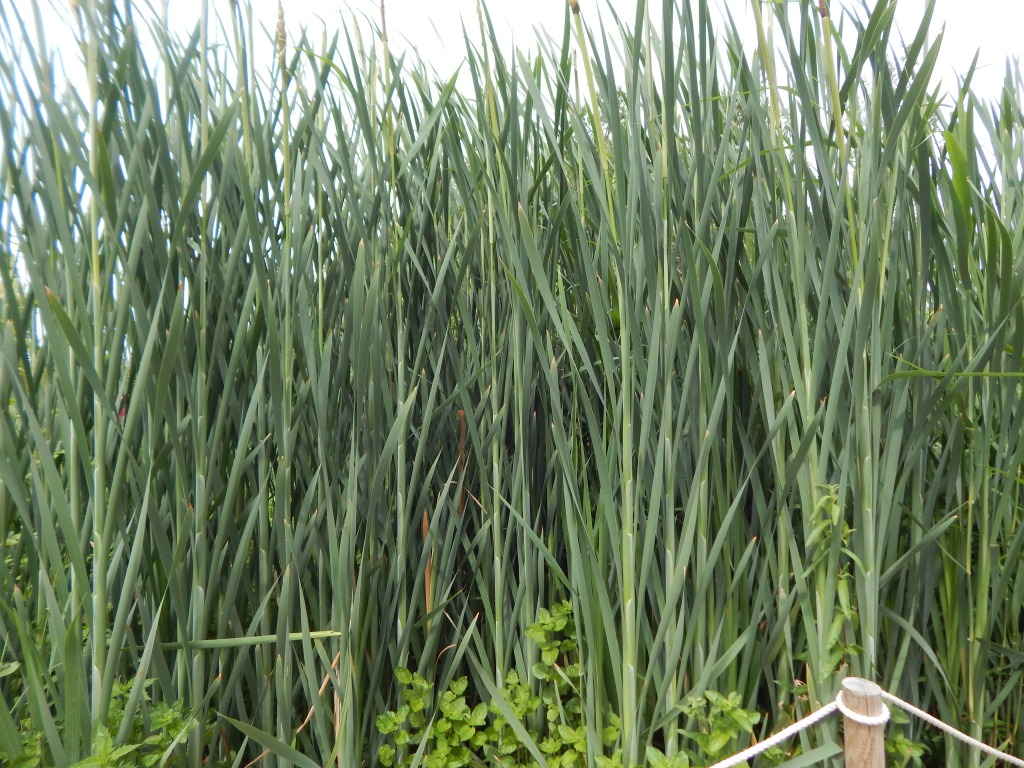
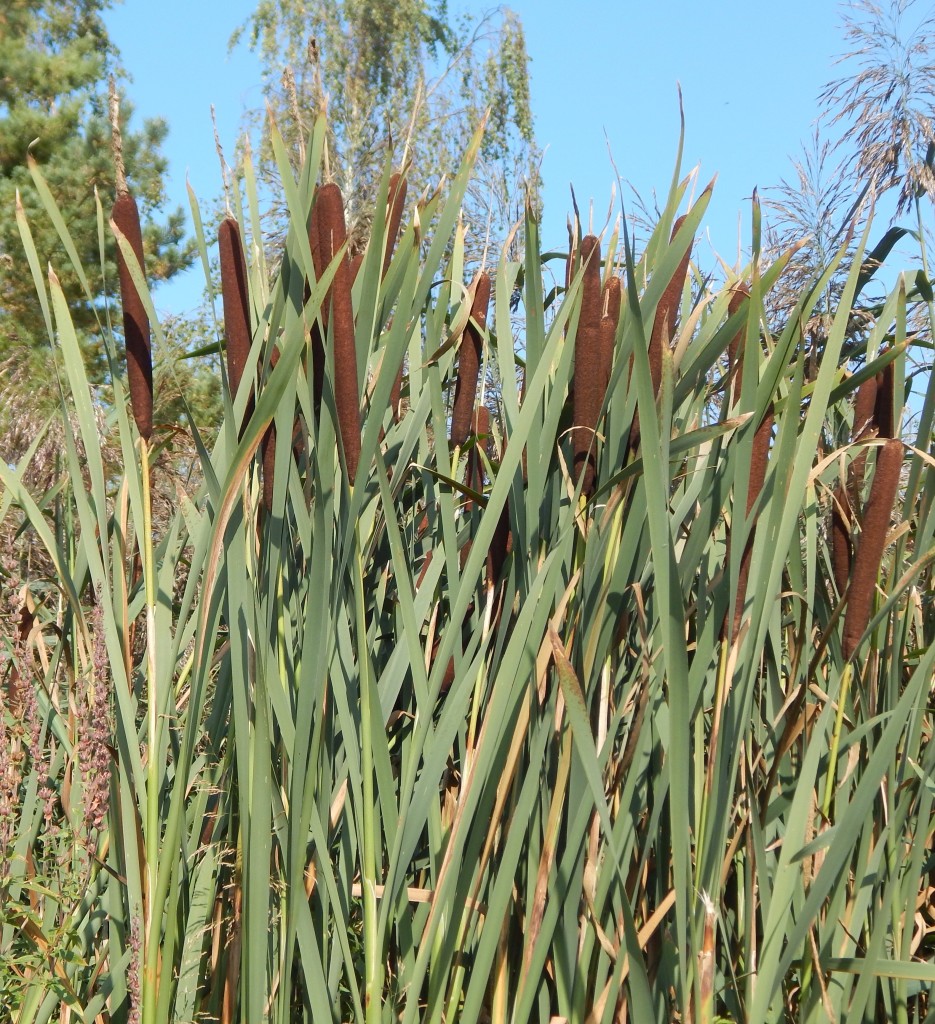
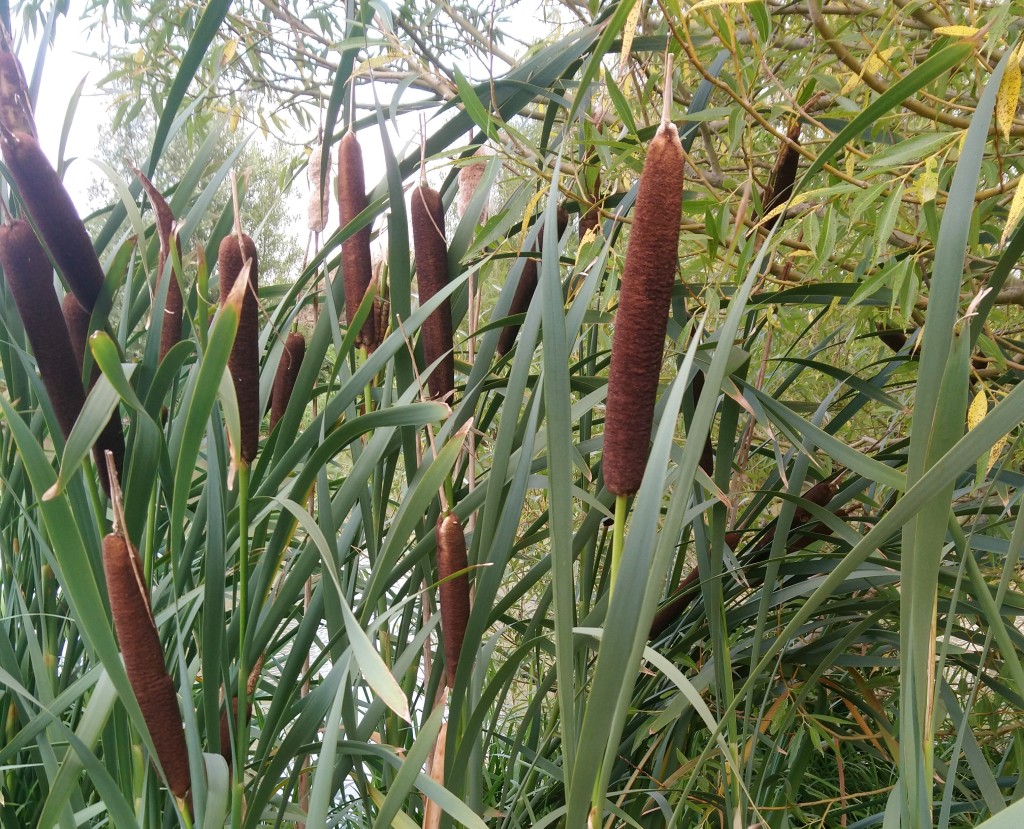
Single straight vertical stems support the flowers, with a number of male flowers above and female flowers below. Male flowers are just a pair of stamens and they wither away once their pollen has been shed.
Large numbers of tiny female flowers just below the male spike form a long sausage shaped spike up to 30 cm long. The seeds are minute and disintegrate into a wool-like fluff to be dispersed by the wind.
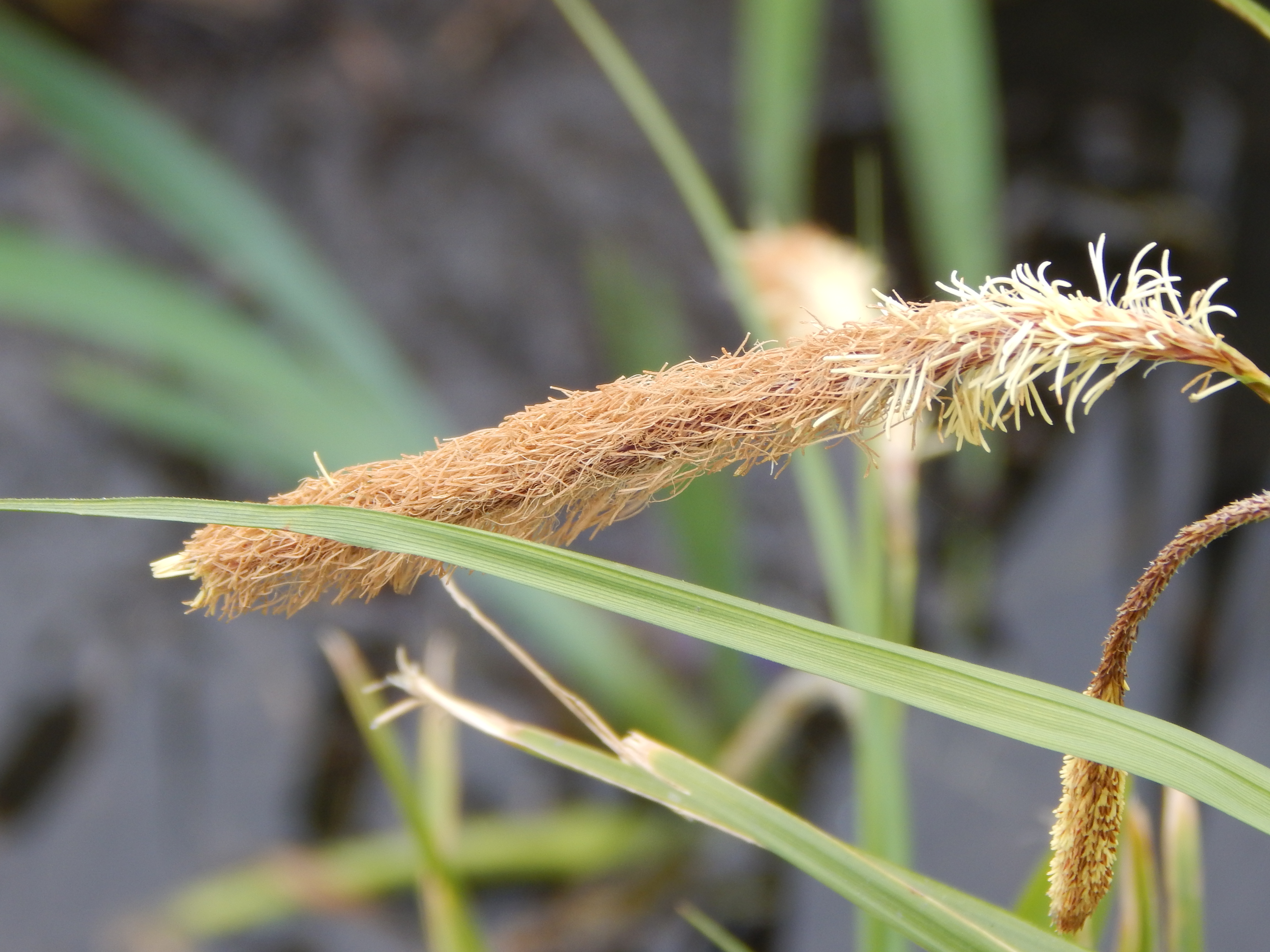

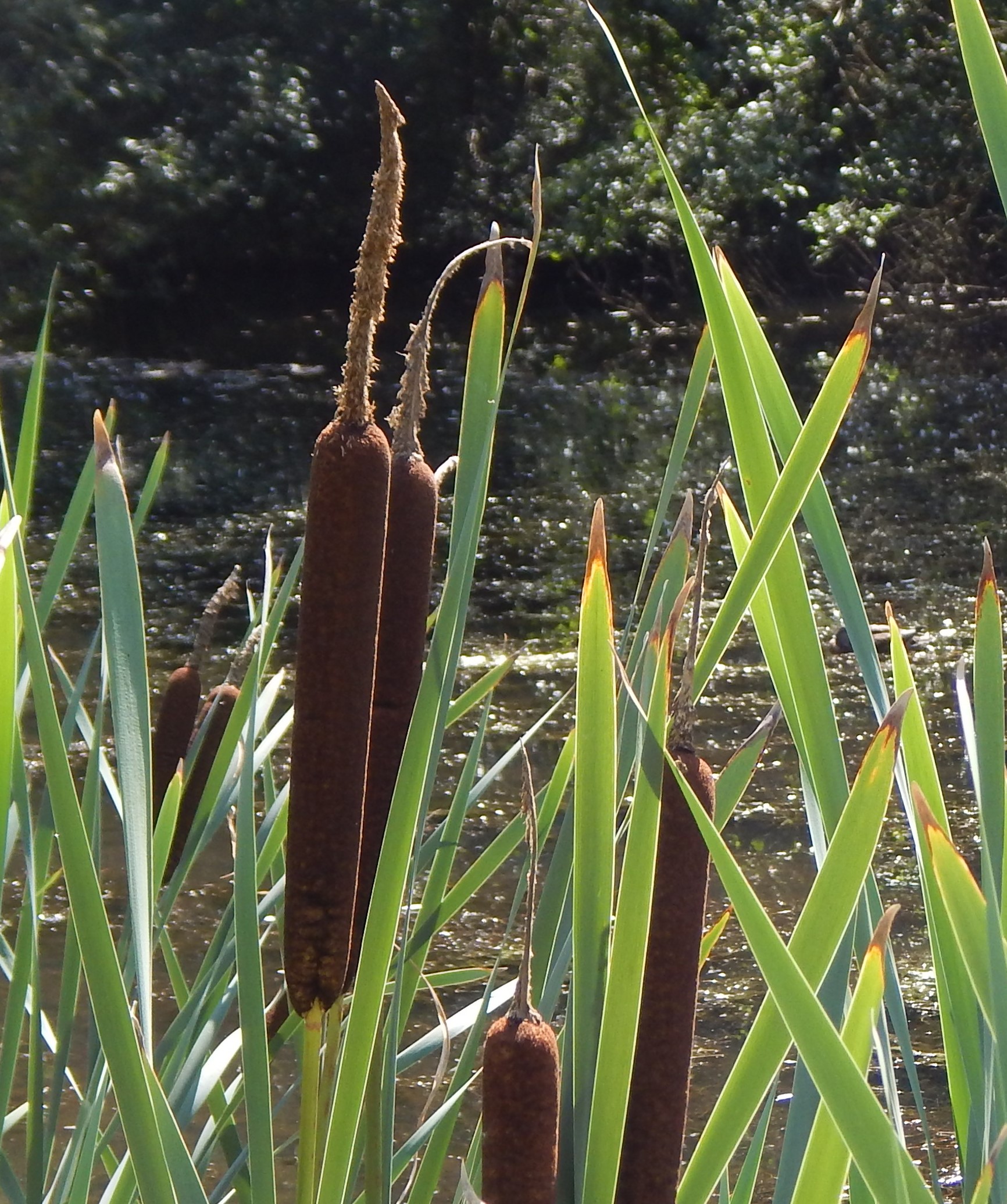

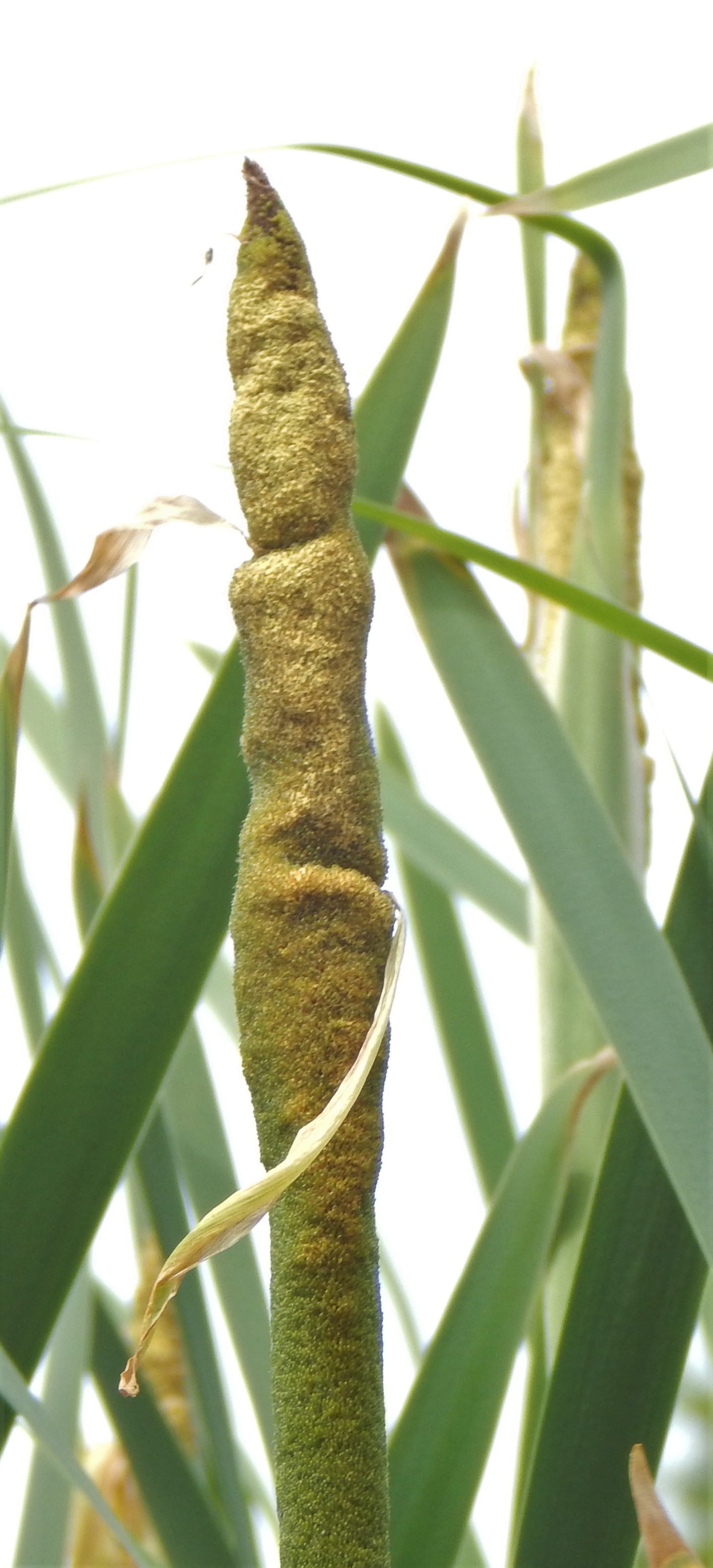
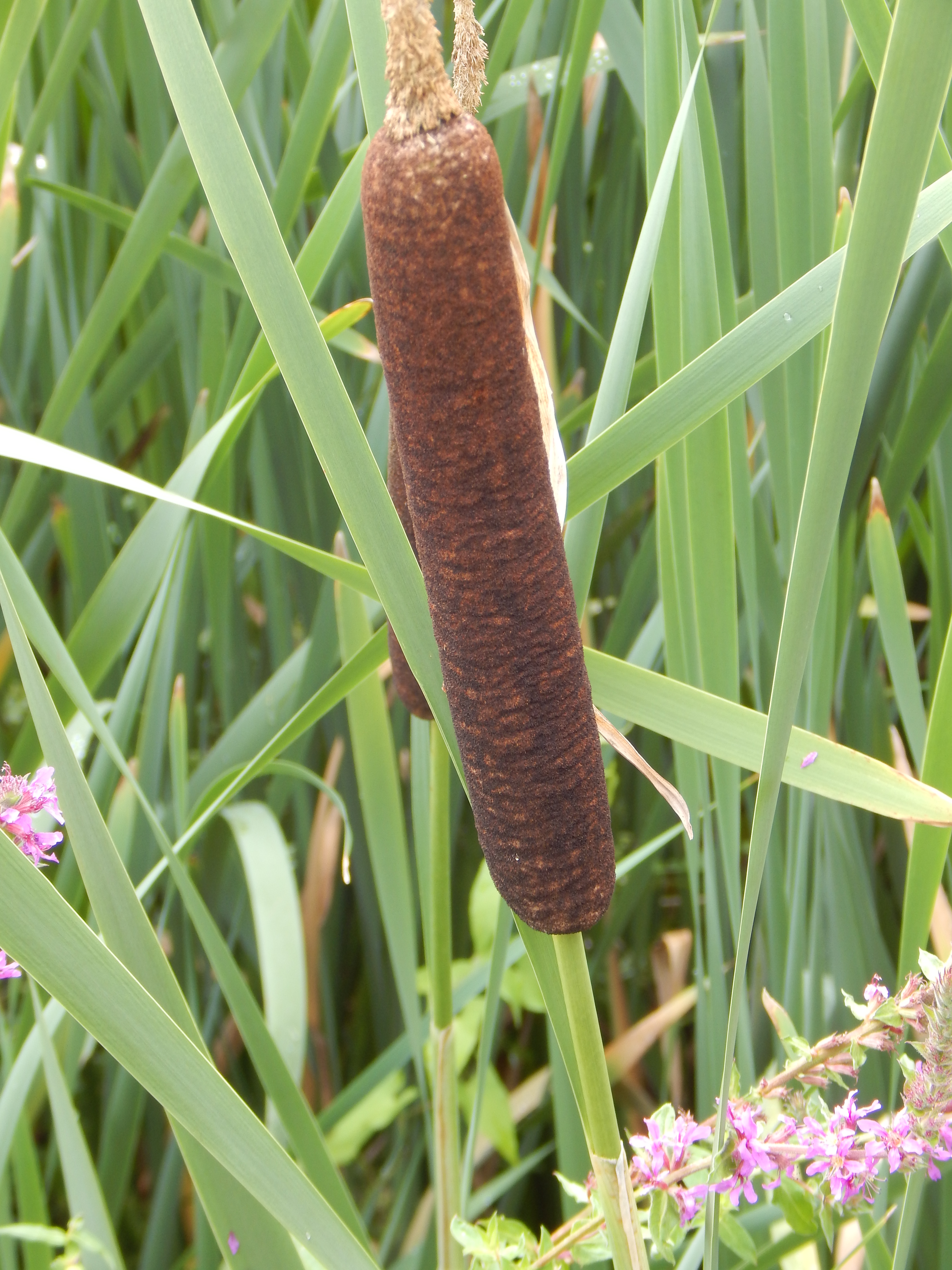
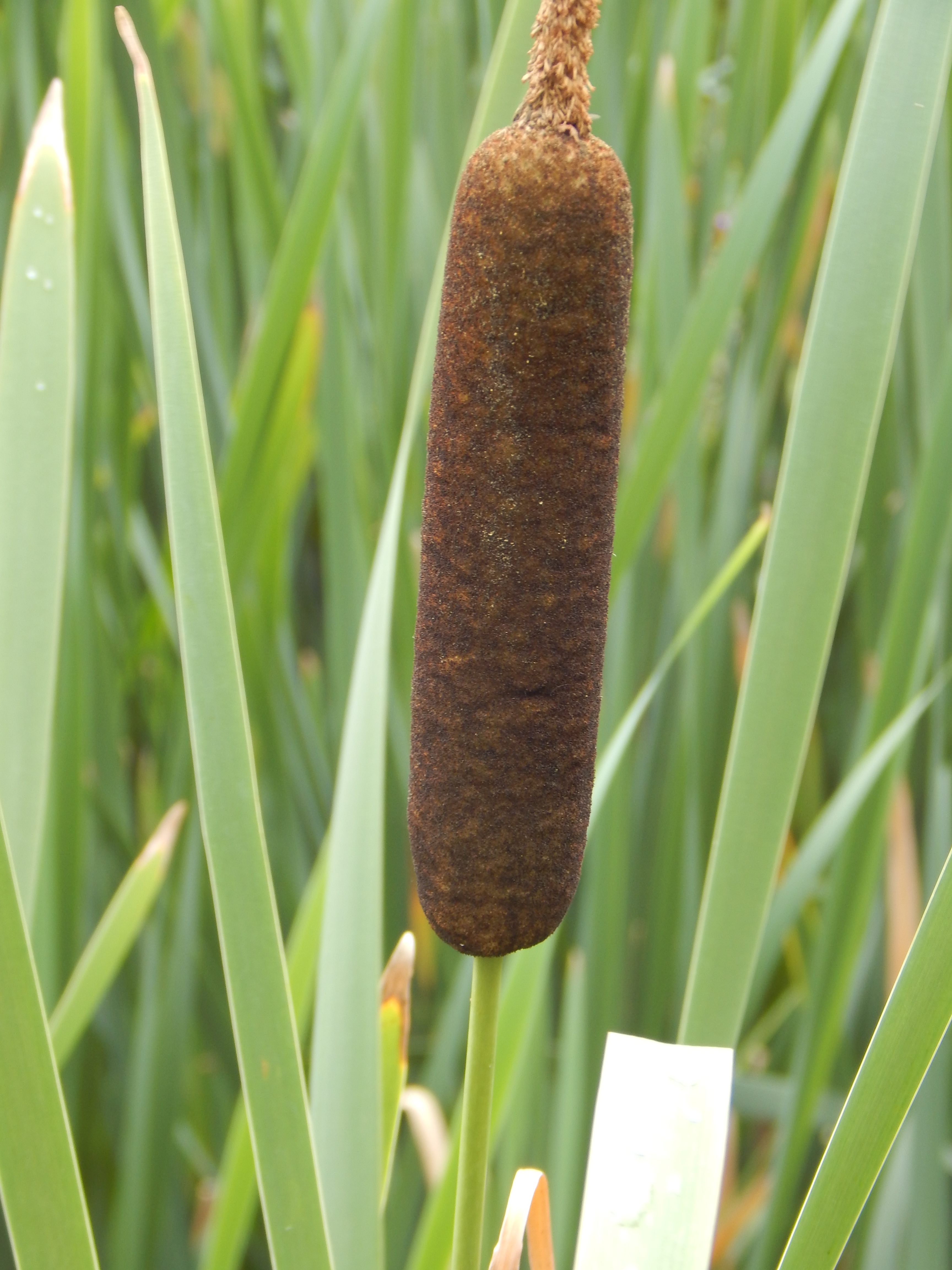

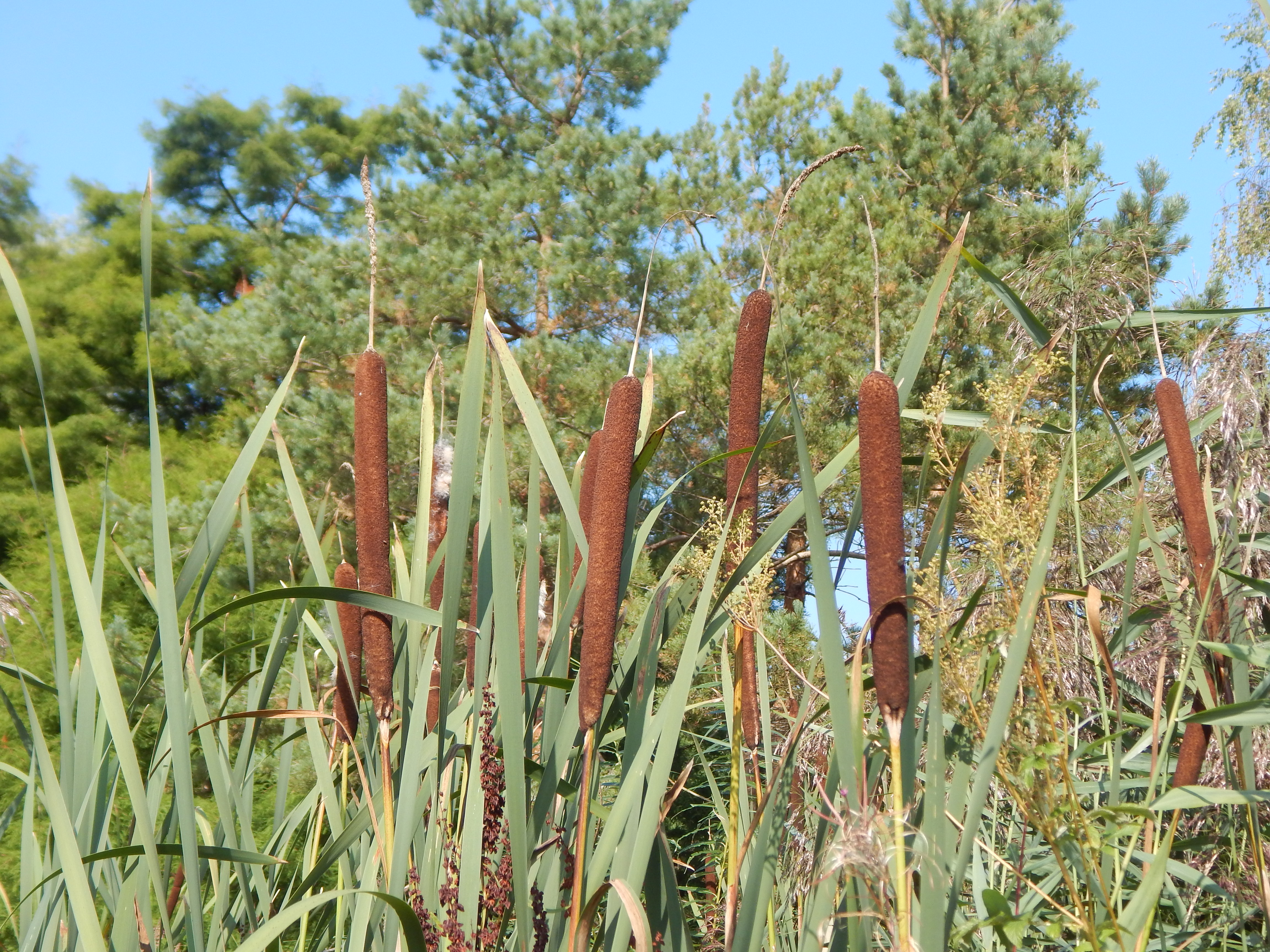

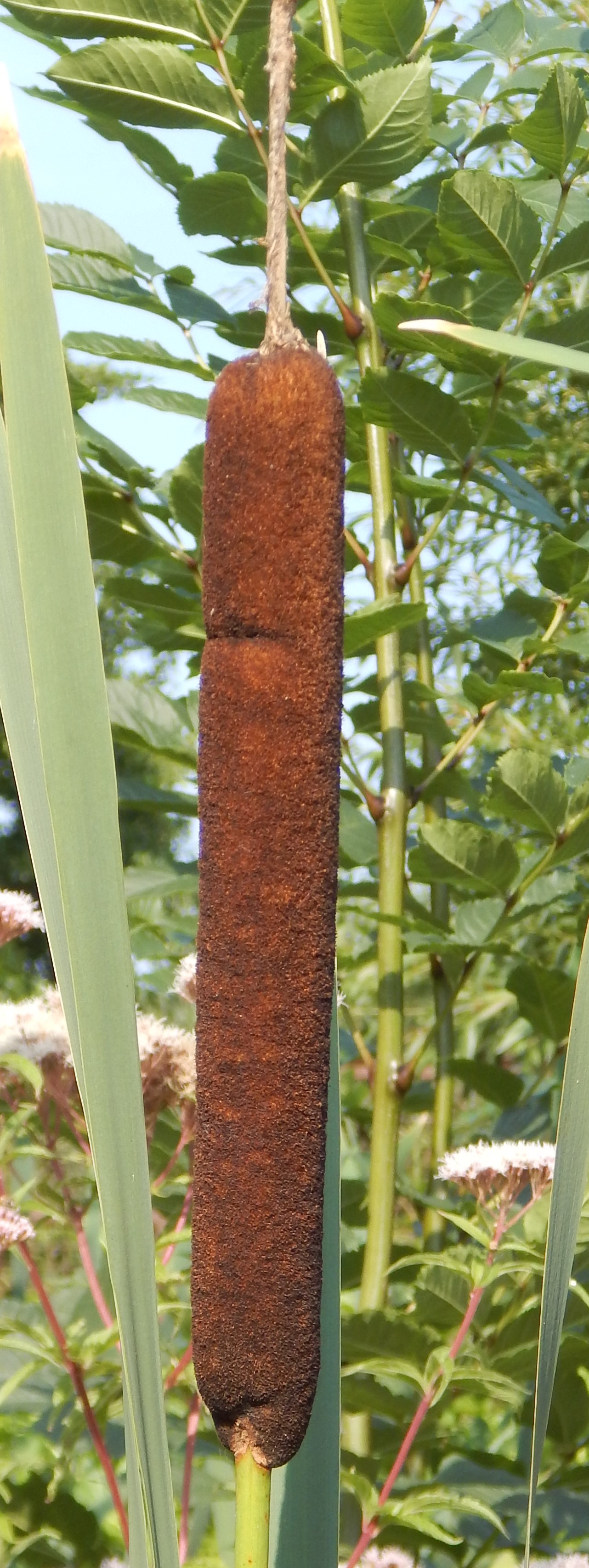
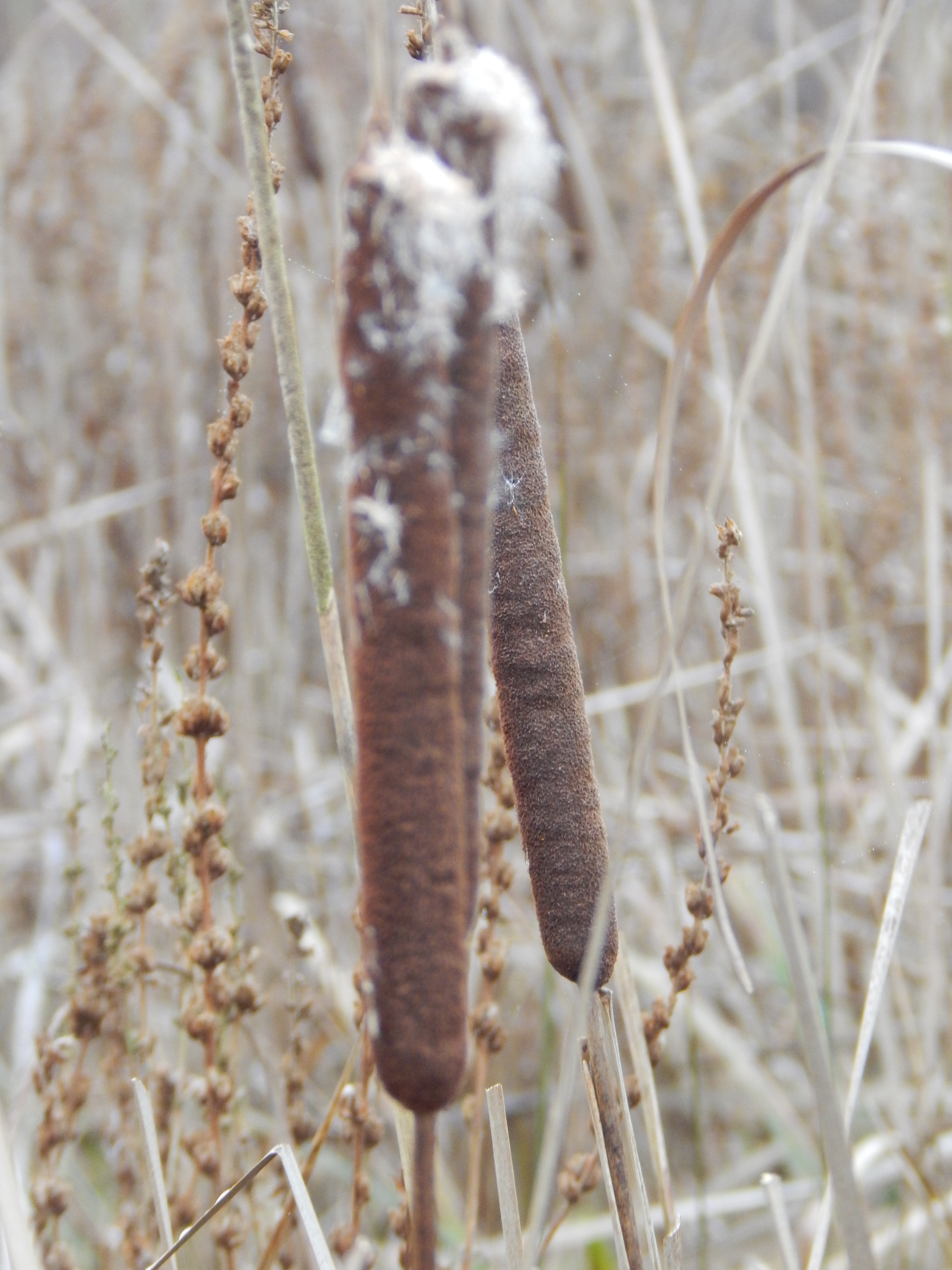
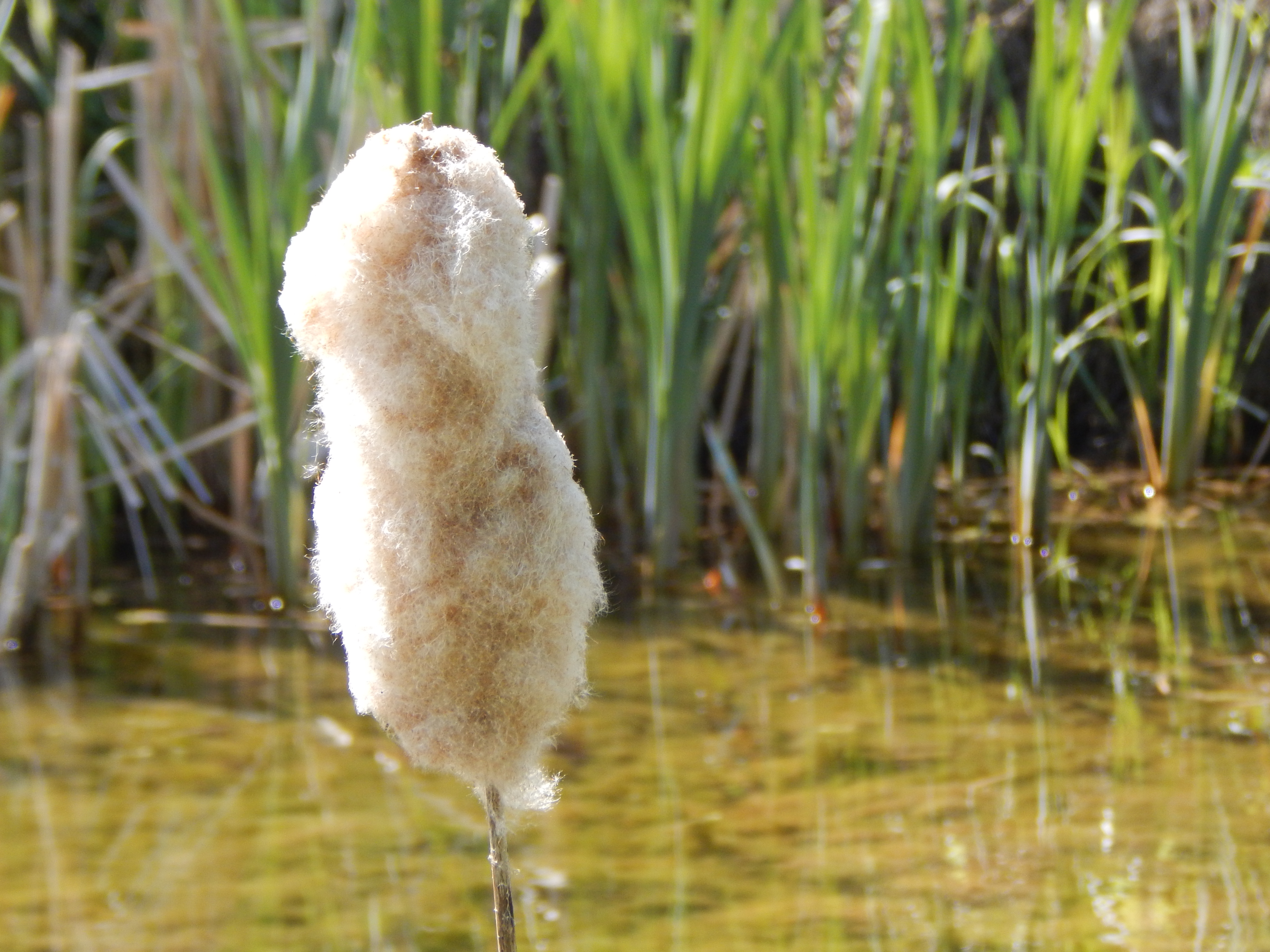
Habitat and use
Typha latifolia is native to the temperate Northern Hemisphere and is an introduced plant in Australia. It can be found in a variety of climates but is only found in or very near water.
Most of the plant is edible and has it has been used as a food source by native Americans. (It should not be eaten if the water in which it grows is polluted.)
Other Notes
The ‘ark of bulrushes’ in the story of Moses from the Book of Exodus almost certainly refers to Cyperus papyrus, the Paper Reed, the origin of papyrus and paper.
See also
Taxonomically, the family Typhaceae is very closely linked to the bromeliads, Bromeliaceae, and less closely linked to the rest of the order Poales. Bromeliads include many epiphytes and other terrestrial species like Ananas comosus, the Pineapple. You won’t see pineapples growing in the UK but you will see many epiphyte bromeliads as houseplants.
See [360] Mistletoe for the word epiphyte. (OK, It’s a plant growing on another plant.)
